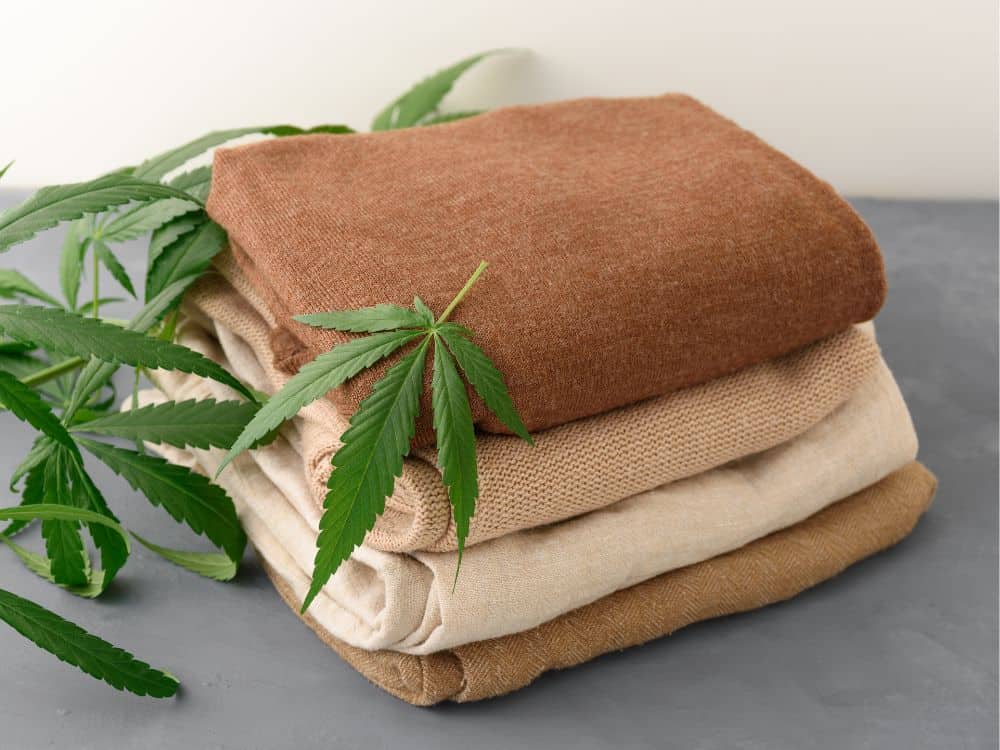Top Reasons For Choosing Hemp Clothing
Wiki Article
What Are Some Benefits That Hemp Clothing That Is Low Impact Has For The Environment.
The hemp clothing that is low impact offers a variety of environmental advantages in comparison to clothing made of synthetic fibers and cotton. Hemp clothing has a variety of environmental advantages. It grows rapidly and requires minimal irrigation, herbicides or pesticides. Hemp is able to adapt to various soil types and climates, which reduces the requirement for chemical fertilizers in agriculture.
Hemp uses less water in general than cotton, which is known for its heavy consumption. Hemp clothing is efficient in terms of water use because of this.
There are no herbicides or pesticides- Hemp can be cultivated without the need for synthetic herbicides or pesticides in most cases, reducing the environmental impacts of chemical farming.
Hemp cultivating can improve soil quality thanks to its deep-rooted roots system which aids in preventing erosion and compaction of soil. It also leaves the soil in better shape for future crops.
Biodegradability - Hemp fibers degrade and biodegrade naturally over time. This decreases the environmental impact of textile waste. In contrast, synthetic fibers such as polyester may take hundreds of years to decay.
Lower carbon footprint. The production process for hemp fibers is typically less carbon-intensive than the production of synthetic materials. In addition, as it develops hemp is able to absorb carbon dioxide from the atmosphere and act as a carbon sink.
Durability- Hemp clothing is known for its long-lasting durability and durability. Good quality hemp clothes will last for years and reduce the need for frequent replacements, and further reducing consumption.
Natural Pest Resistance- Hemp plants have natural resistance to many pests, reducing the requirement for chemical pest control measures.
Hemp is versatile, as it can be used in a myriad of textile applications including clothing, bags and accessories. It's a green and trendy textile.
Regenerative Agriculture - Some sustainable farming practices include hemp in Regenerative systems that aim to improve and restore ecosystems, as well as produce crop. This strategy could have positive impacts on the environment.
It's crucial to keep in mind that even though hemp provides many environmental benefits, the overall sustainability of clothing depends on other factors like the process of dyeing, transport, and consumer behaviors. As with every industry, there could be variations in the production methods and standards, so it's beneficial to look for certified hemp clothing that is sustainable or organic options to ensure the highest environmental benefits. See the top rated hemp clothes info for website examples including hoodlamb coat, hemp shorts, hemp textiles, hemp jacket, hemp yoga clothes, hemp shorts patagonia, hemp fabric, clothes made from hemp, hemp underwear, patagonia hemp jacket and more.

How Do Hemp Fibers Improve Carbon Sequestration (Carbon Sequestration) Sustainability, Sustainability, As Well As Crop Rotation (Crop Rotation)?
Hemp fibers are a green choice for both agricultural and textile production. They are beneficial for the sequestration of carbon and sustainability.
Hemp is a very rapid-growing plant. It is able to mature within as short as 70 to 120 days dependent on the variety and the conditions. In their rapid growth phase hemp is able to absorb carbon dioxide from the atmosphere through photosynthesis. This carbon uptake could significantly aid in carbon sequestration, which reduces CO2 levels in atmosphere.
Hemp's high biomass production is well-known. The dense foliage of the plant and its tall stalks produce an enormous amount of organic matter. The biomass can be used for the production of organic carbon in soils, or to be used in other ways.
Sustainability:
Hemp is grown using lesser chemicals than cotton or other crops. Its natural resistance reduces its necessity for chemical interventions. The organic hemp cultivation, specifically, emphasizes sustainability by avoiding synthetic chemicals altogether.
Hemp is a water efficiency, in comparison to other crops that require large amounts of water like cotton. This makes hemp more sustainable in areas with less water resources.
Hemp's deep-rooted system can improve the health of the soil. The deep roots of the plant can lower runoff through stabilizing soils and improving the structure of soil. Hemp cultivation can also boost microbial action in the soil. This promotes nutrient cycle and overall soil fertility.
Hemp is a great crop to incorporate into rotation systems. Crop rotation refers to the process of rotating crops in a field over the course of. This method can help break cycle of diseases and pests and reduce soil loss and enhance soil structure. The role of hemp in crop rotation can contribute to the sustainability of farming practices.
Crop Rotation
Hemp can be a great addition to the rotation of other crops like legumes, grains or vegetables. This will help farmers maintain the soil's quality, reduce the risk for pests, diseases and other crop-specific problems, and promote a balanced cycle of nutrients.
The roots of hemp are deep and can penetrate soils and open them up, reducing compaction. This also improves the water infiltration. A better soil structure can be an advantage for crops that follow after hemp.
Summary Hemp fibers can have a positive impact on soil quality, they are compatible with crop rotation as well as enhancing the carbon sequestration process as well as sustainability. They do this through fast growth, biomass, minimal chemical use, water efficiency and their compatibility with crop-rotation methods. The hemp fibers produced by this sustainable, regenerative farming practice can be a fantastic option for textiles. Check out the top rated hemp clothes for blog recommendations including mens hemp trousers, patagonia hemp vest, patagonia iron forge jacket, hemp active wear, hemp fleece fabric, hemp fabric by the yard, hemp wear, jungmaven sweatshirt, hemp fabric clothing, organic hemp clothing and more.

What Are Some Benefits Of Bamboo Clothing For Comfort And The Environment?
Bamboo clothing offers several advantages for both comfort and the environment- Comfort-
Bamboo fabric is popular for their extraordinary softness. It has a soft velvety texture that is comfortable to wear. A lot of people find bamboo clothing extremely soft making it a preferred choice for intimate clothes, loungewear, and activewear.
Breathability - Bamboo fibers are naturally breathable and moisture-wicking. Air can circulate through the tiny gaps, keeping you cool in the hottest temperatures. The moisture wicking properties of the fabric help to remove sweat from the skin. This can reduce the sensation that clothing is damp.
Bamboo clothing has great thermoregulatory qualities. It will keep you warm in colder temperatures by retaining heat close to the skin. In addition, it helps keep you cool during hot weather by allowing excessive heat and moisture to go away. Bamboo clothing is suitable to wear throughout the year since it is able to adapt to various temperatures.
Hypoallergenic- Fabric made from bamboo is gentle and hypoallergenic. Bamboo is less prone to cause irritation or allergic reactions.
Bamboo fibers possess natural antimicrobial properties that can assist to stop the growth of odor-causing bacteria. This is a factor that helps bamboo clothing remaining fresh, even when it is worn during physical activity.
Environment-
Sustainability- Bamboo is a renewable and sustainable resource. Bamboo is one the fastest-growing plants in the world. It needs minimal water to grow and requires no pesticides. Bamboo can be harvested and the plant will regenerate from its roots.
Bamboo is a plant that has low water consumption. It is able to thrive with very little irrigation and often can be developed by the rain alone. This can help reduce the environmental impacts that come with agricultural water usage.
Biodegradability- Bamboo clothing is biodegradable, which means it degrades naturally over time when disposed of. This feature reduces waste that is not biodegradable textiles dumped in landfills.
Carbon Sequestration Bamboo plants absorb carbon dioxide (CO2) during rapid growth. Bamboo cultivation can be a carbon-sink that can help to mitigate the effects of climate change by reducing greenhouse gases.
Chemical Reduction - The production and processing of bamboo fabrics typically require less chemicals than other types of textiles. This helps reduce the impact on the environment that the manufacturing of textiles has.
Closed-Loop Production- A few bamboo fabric production processes utilize closed-loop systems, which reuse and recycle water and chemicals, while minimizing waste and pollution.
Be aware that the effects of bamboo clothing on the environment may differ depending on the type of manufacturing process used, and the source of bamboo used and sustainable from the bamboo forest. If you're hoping to get the greatest environmental benefits out of bamboo clothes, make sure you choose sustainable and ethical manufacturing practices. Check out the best helpful hints for bamboo clothing for site examples including bamboo terry fabric, bamboo apparel wholesale, mens boxer shorts bamboo, bamboo cotton pajamas, childrens bamboo socks, bamboo jeans brand, bamboo tee shirts wholesale, bamboo sports clothing, halloween bamboo pajamas, bamboo cay shirts and more.
